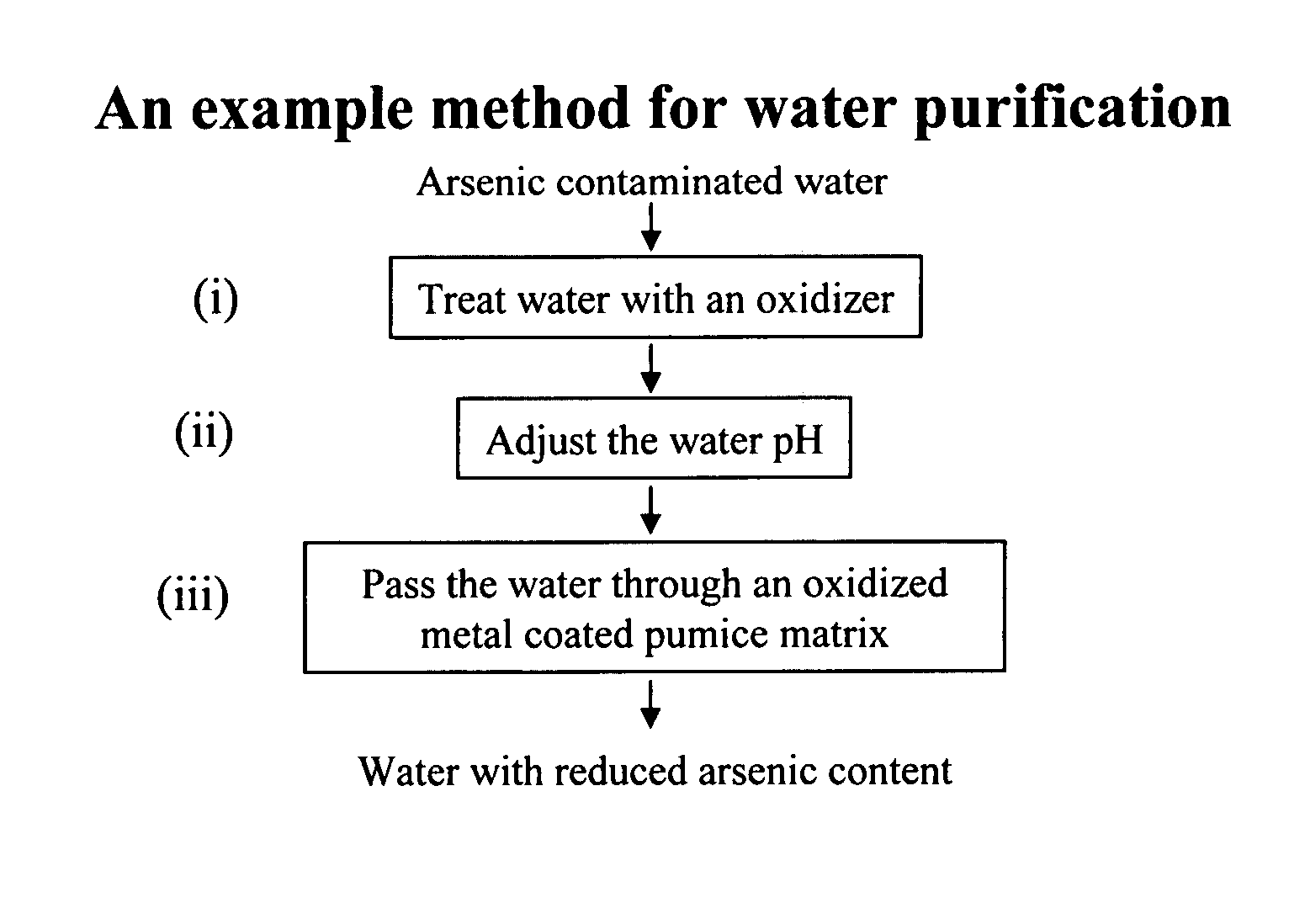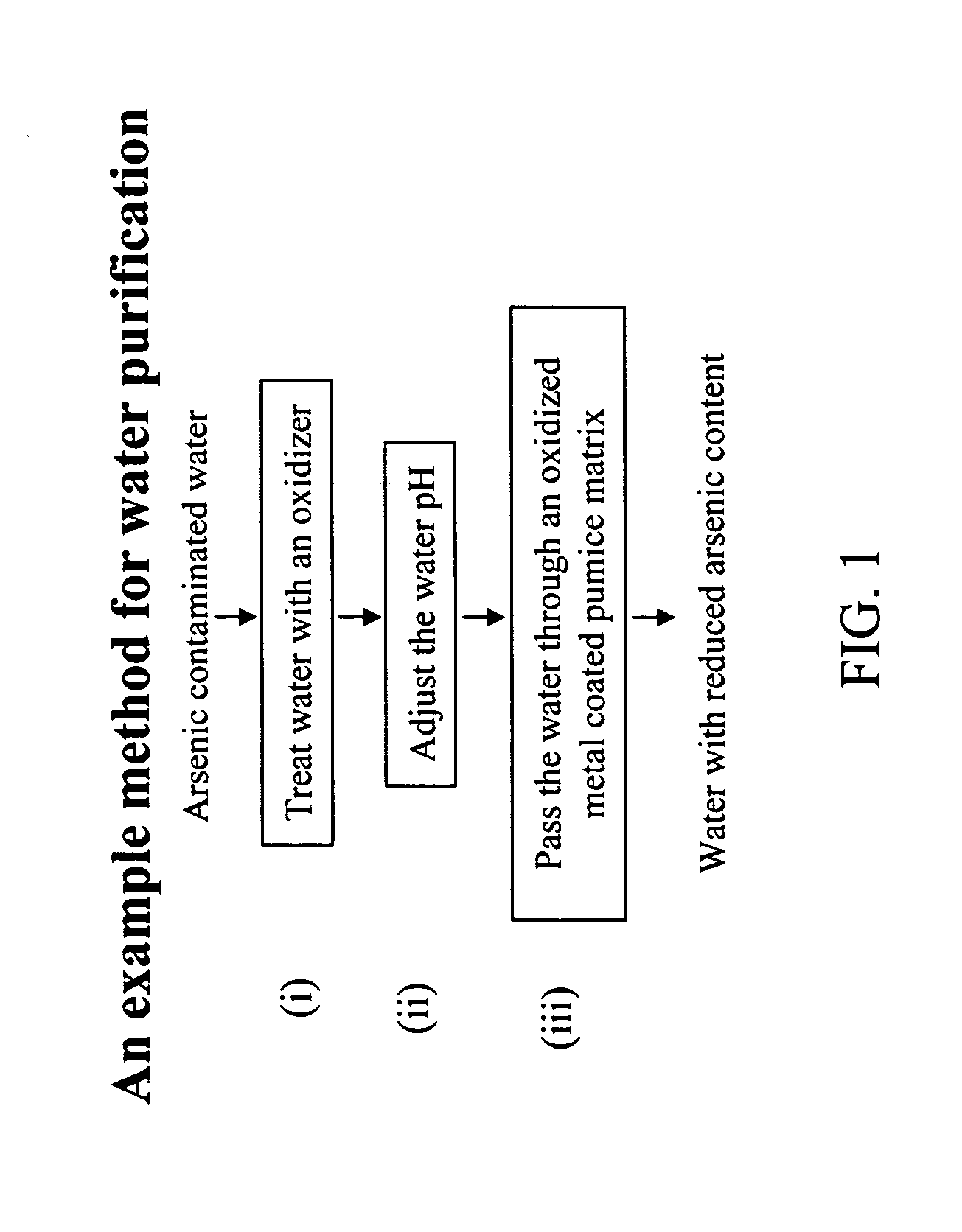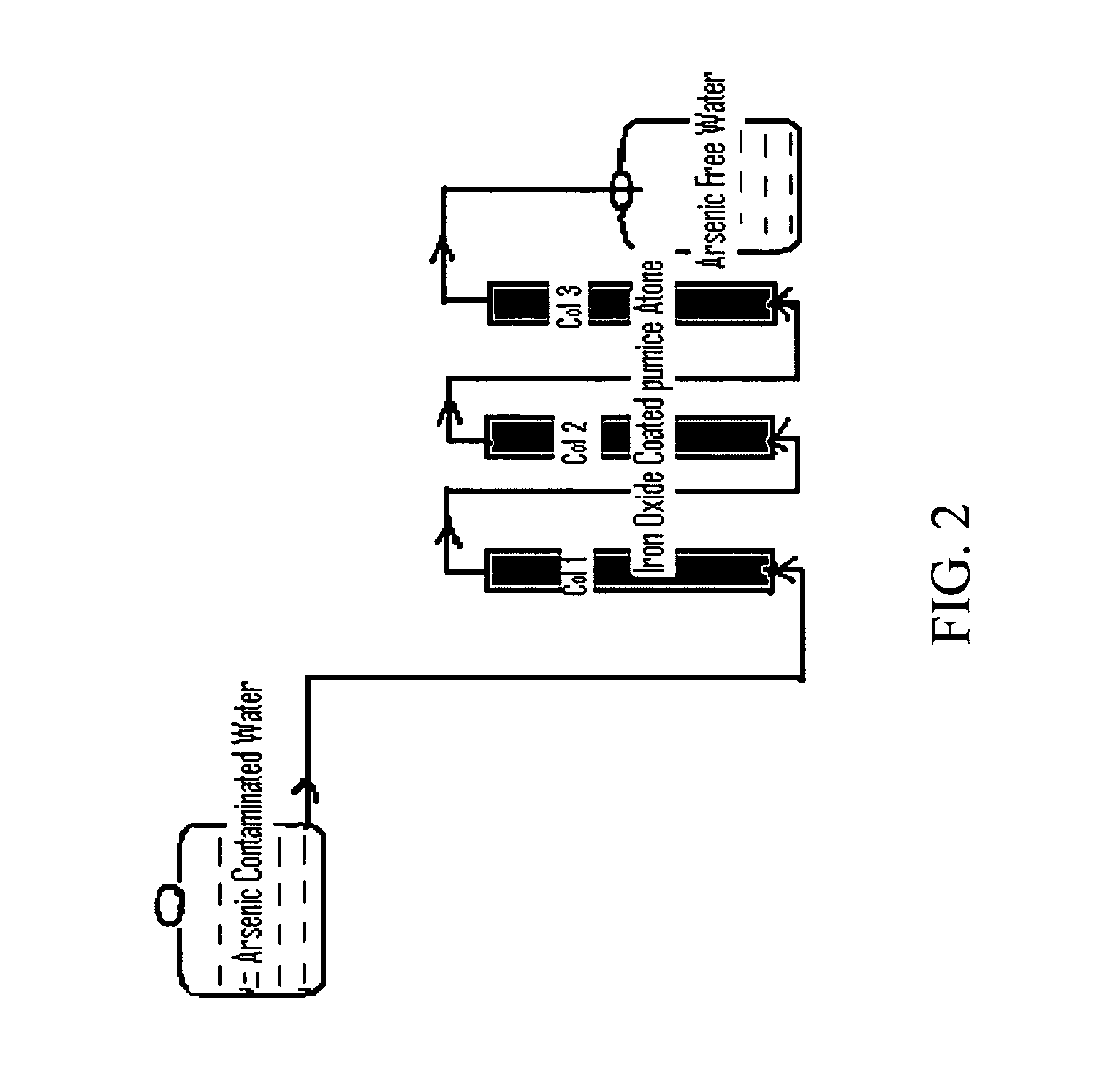Removal of arsenic from water with oxidized metal coated pumice
- Summary
- Abstract
- Description
- Claims
- Application Information
AI Technical Summary
Benefits of technology
Problems solved by technology
Method used
Image
Examples
example 1
Coating Pumice with Iron Hydroxide
[0069] Natural pumice stones were broken into aggregate size US Sieve Size No. 18×20 and coated with iron hydroxide by the procedure similar to that of Joshi and Chaudhuri (1996). The procedure comprised pre-washing of pumice stone by immersing in deionized (DI) water for 24 hours, drying them in an oven at 105° C. for 14 hours. After drying, pumice stones were saturated with 2M ferric nitrate (2M Fe(NO3)3.9H2O), prepared by dissolving 808 g Fe(NO3)3.9H2O in DI water and diluting to 1000 ml. The pH of the mixture was adjusted to 11 with ION sodium hydroxide solution. The mixture was mixed for two minutes and dried in an oven at 110° C. for 14 hours. The coated Pumice Stone was washed with distilled water and the runoff was removed, the material was dried in an oven at 105° C. for 14 hours, and stored in a plastic bottle.
example 2
Screening Material for As Removal
[0070] Several materials have been examined for arsenic removal by adsorption. The materials selected for screening test were natural pumice stone, pumice stone coated with oxidized iron, natural zeolite, zeolite coated with oxidized iron, black sand, red sand, red soil, iron slag, red shale, hematite, copper slag, and natural garnet.
[0071] Initially, indicated concentrations of adsorbent materials were placed in individual batch reactors (plastic bottles) containing arsenic (V)(Na2HAsO4.7H2O) spiked water. The concentration of the As (V) in the water was 100 μg / L. The pH of the water was about 6 and the temperature was 250° C. The slurry was agitated with a mechanical shaker for 12 hours to give adequate contact between the adsorbent and dissolved arsenic (V). After sufficient contact time, water samples from each reactor were drawn and analyzed for total arsenic. The laboratory results and other relevant data for screening test are presented in T...
example 3
Screening Candidate Material for As Removal
[0073] Pumice stone, zeolite, and sand each coated with oxidized iron were selected for further testing. The black sand was coated with ferric nitrate by the procedure similar to that of Joshi and Chaudhuri (1996). The abosrbtion of each material was evaluated in batch reactions. Initially 0.2, 1.0, 2.0, and in some cases 2.8 grams of adsorbent material was weighed and transferred into individual batch reactors (plastic bottles) containing 1000 ml arsenic spiked water (100 (μg / L)). The slurry was agitated with a mechanical shaker for 14 hours to obtain adequate contact between the arsenic in water and the adsorbents. After sufficient contact time, samples were drawn, filtered, preserved with nitric acid, and delivered to the laboratory for analysis for arsenic. The results for batch tests are shown in Table 3 and FIG. 4.
[0074] As presented in the Table 3, 2.0 g / L of coated pumice stone adsorbed 98% detectable arsenic (V) (Na2HAsO40.7H2O) ...
PUM
| Property | Measurement | Unit |
|---|---|---|
| Temperature | aaaaa | aaaaa |
| Density | aaaaa | aaaaa |
| Dimensionless property | aaaaa | aaaaa |
Abstract
Description
Claims
Application Information
 Login to View More
Login to View More - R&D
- Intellectual Property
- Life Sciences
- Materials
- Tech Scout
- Unparalleled Data Quality
- Higher Quality Content
- 60% Fewer Hallucinations
Browse by: Latest US Patents, China's latest patents, Technical Efficacy Thesaurus, Application Domain, Technology Topic, Popular Technical Reports.
© 2025 PatSnap. All rights reserved.Legal|Privacy policy|Modern Slavery Act Transparency Statement|Sitemap|About US| Contact US: help@patsnap.com



